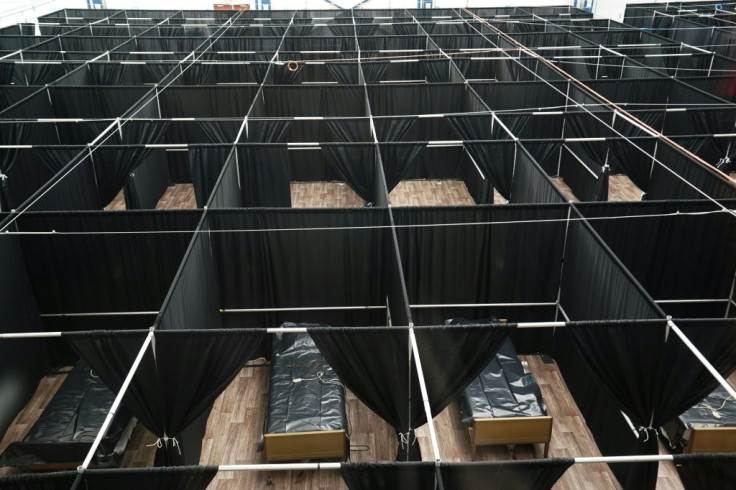Coronavirus Relief: Hospitals Upset Over Way COVID-19 Funds Being Distributed

KEY POINTS
- New York, the hardest hit state, is receiving just $12,000 per patient while North Dakota is receiving $335,000
- The more Medicare recipients in Advantage programs, which were instituted to control overall costs, the less money states are getting
- HHS said it used Medicate data to get the funds out the door quickly
Hospital systems are taking issue with the method the Department of Health and Human Services is using to distribute $30 billion in coronavirus emergency grants because it is based on Medicare distributions rather than COVID-19 patient loads, Kaiser Health News reported.
The result is that hospitals in relatively lightly hit states like Minnesota, Nebraska and Montana are getting more than $300,000 per reported case, with North Dakota receiving a whopping $339,00 per patient, while hospitals in New York, the hardest hit state, are getting $12,000, Becker’s Hospital CFO Report found.
By midafternoon Tuesday, the U.S. was reporting nearly 600,000 confirmed coronavirus infections with more than 25,200 deaths.
Hospitals with managed care Medicare business – Medicare Advantage – also are being denied their fair share of funds, Kaiser Health News reported. The Kaiser Family Foundation has reported more than 40% of Medicare beneficiaries are in Medicare Advantage plans in Florida and 39% are in such plans in New York while just 17% are in Medicare Advantage plans in Montana and 3% in Wyoming.
“This distribution methodology is woefully insufficient to address the financial challenges facing hospitals at this time, especially those located in hot spot areas such as the New York City region,” Kenneth Raske, CEO of the Greater New York Hospital Association, said in a memo.
Hospitals in affected areas are losing millions of dollars because they have been forced to cancel elective surgeries to focus on COVID-19 patients, cutting off their most lucrative source of revenue.
The $2.2 trillion coronavirus relief package signed into law last month provided $100 billion in healthcare provider relief. The $30 billion pool is the first tranche of funds being released. The CARES Act does not specify the allocation method, just saying it is intended “to prevent, prepare for and respond to coronavirus.”
Raske noted rules still are being developed for the next round of distributions, which will include children’s hospitals and nursing homes, as well as for care provided to the uninsured. He said the hospital association sent a letter to HHS Secretary Alex Azar earlier this week, asking the department to prioritize hot spots.
“Our proposal includes a methodology for identifying and funding hot spot areas and overcomes the three major weaknesses that we have identified with the Trump administration’s approach,” he wrote.
Carlos Migoya, CEO of Jackson Health, based in Miami, said the distribution method could jeopardize his system’s “very existence,” begging Azar to “be here for us right now.”
“No one wants to talk about money in the middle of a health crisis but hope alone will not cash checks to employees or suppliers,” Migoya said.
“It seems weird that they wouldn’t just target areas geographically based on where the surge has been,” Chas Roades, CEO of Gist Healthcare, a consulting firm, told KHN.
A spokesperson for HHS told Kaiser using Medicare data allowed the department to get the money out the door quickly. New Jersey Sens. Bob Menendez and Cory Booker and Rep. Bill Pascrell called the decision flawed saying the number of COVID-19 patients should have been taken into account.
HHS said the next tranche will focus on “providers in areas particularly impacted” by the pandemic, as well as rural areas, which generally get lower shares of Medicare funds.
© Copyright IBTimes 2024. All rights reserved.






















